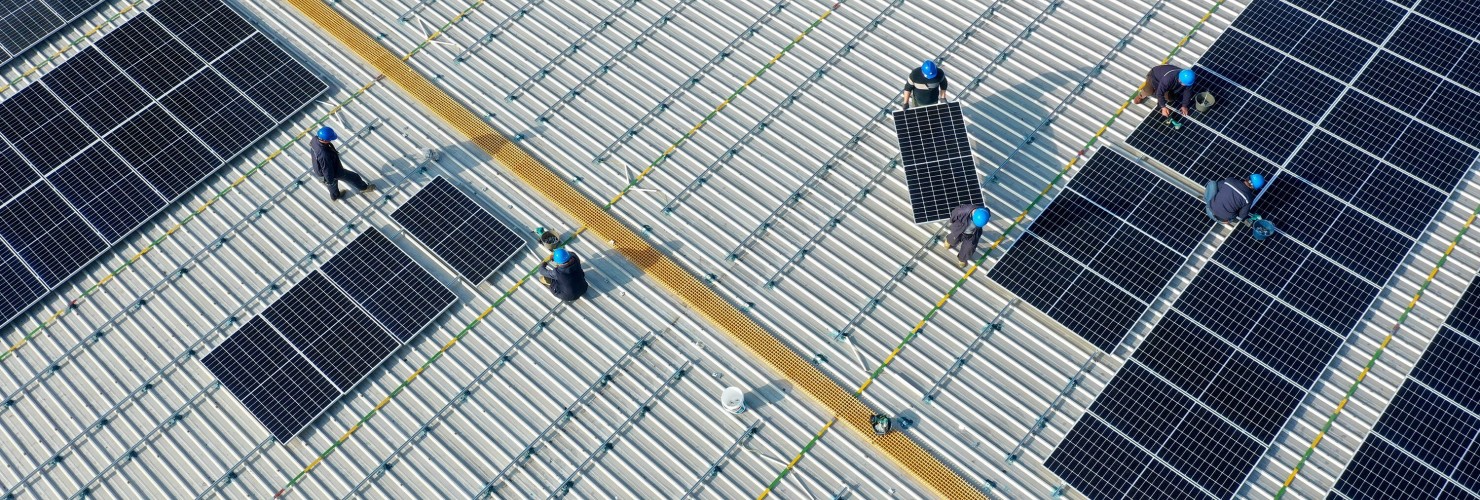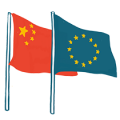

Net-zero Europe risks a heavy dependence on China
Broadening critical-material supplies will not be enough to diversify green supply chains away from China, says Alexander Brown. Components and products sourcing has to change as well. The upcoming UN Climate Change Conference in Egypt is an important opportunity for Europe to shape a new vision.
As Europe tries to end its dependence on Russian fossil fuels, it is strengthening ties with another unreliable economic partner – China. Gas supplies from Russia have dropped 88 percent over the past year. Soaring energy prices are increasing heating costs for households, threatening to close factories and fueling overall inflation. In response, the EU has upped the tempo of its transition to renewable energy. But it will not be able to succeed without China.
China has come to dominate large parts of the global green supply chain by leveraging economies of scale and low-cost energy and labor. In photovoltaics, for instance, China accounts for about 80 percent of the global production of polysilicon, cells and modules, as well as 97 percent of wafer production. About four-fifths of wind-turbine components are manufactured in China. Neodymium, a rare earth element used to make permanent magnets that go into wind turbines and electric vehicles, is also predominantly refined in China.
China has made a huge contribution to bringing down the cost of green technologies. But recent geopolitical tensions have made sourcing from the country riskier than in the past. China has grown accustomed to using economic coercion, including restrictions on trade, to exert pressure on other countries. Instances of heavy-handed tactics have risen five-fold since 2018. As Europe continues to import Chinese green technologies to accelerate its renewables rollout, it needs to factor in the cost of potential disruptions – and invest in alternatives.
Supply chain security encompasses more than just raw materials
The EU has had an eye on risks to the supply of critical materials since the launch of a raw-materials initiative in 2008. Now the EU Commission is drafting the European Critical Raw Materials Act to support raw materials projects in Europe, as well as working on trade agreements with Chile, Mexico, New Zealand, Australia and India so investments in other regions can boost supply. But raw materials are just the first step towards green technologies. Securing supply chains also requires the diversification of components and final products.
There are plans to boost domestic production in downstream segments, but they will not eliminate the need for imports. The European Solar Initiative aims to have the region producing 20 GW in solar modules annually by 2025 – likely less than half of EU demand. The European Battery Alliance expects to meet 69 percent of demand in 2025 and 89 percent in 2030. But it has not addressed Europe’s position in intermediary segments of the battery supply chain like mining and refining cobalt and lithium, areas in which China dominates.
Europe has to pay more attention to the middle and downstream segments of its renewables supply chain. It should support projects outside the region where local conditions allow for more cost-effective production (and could create demand for EU equipment). Crucially, the EU does not have to go it alone. The US and Japan are equally as concerned about supply chains and intent on resilient sourcing of key raw materials, components and final products.
Investment in emerging economies is key to building resilient supply chains
Joint projects would demonstrate the ongoing commitment of leading Western economies to globalization over protectionism just as they are rolling out industrial policies to ensure a baseline of production capacity at home. The EU could package investments in its Global Gateway strategy, through which it has pledged EUR 300 billion for projects abroad. Some are already underway to boost vaccine manufacturing in partner countries. As climate protection and energy are also included, the program could equally be applied to green technologies.
Europe should also consider creating the equivalent of the state-owned Japan Oil, Gas and Metals National Corporation, which has a mandate to secure a stable resource supply. It has successfully invested in and partnered with rare-earths companies around the world to broaden Japan’s supplier base. European policymakers discussed this option to secure raw materials internationally, but it could also address downstream segments of the supply chain.
Partnerships would enable emerging economies to play a bigger role in green industries. They could take advantage of low labor costs and proximity to related industries in other countries to foster competitive alternatives to China. Investment by the EU and its partners – ideally coupled with the use of innovative European equipment – could also raise environmental and social standards. The upcoming UN Climate Change Conference, the COP27 in Egypt, is an important opportunity for Europe to shape a new vision of resilient green supply chains.

